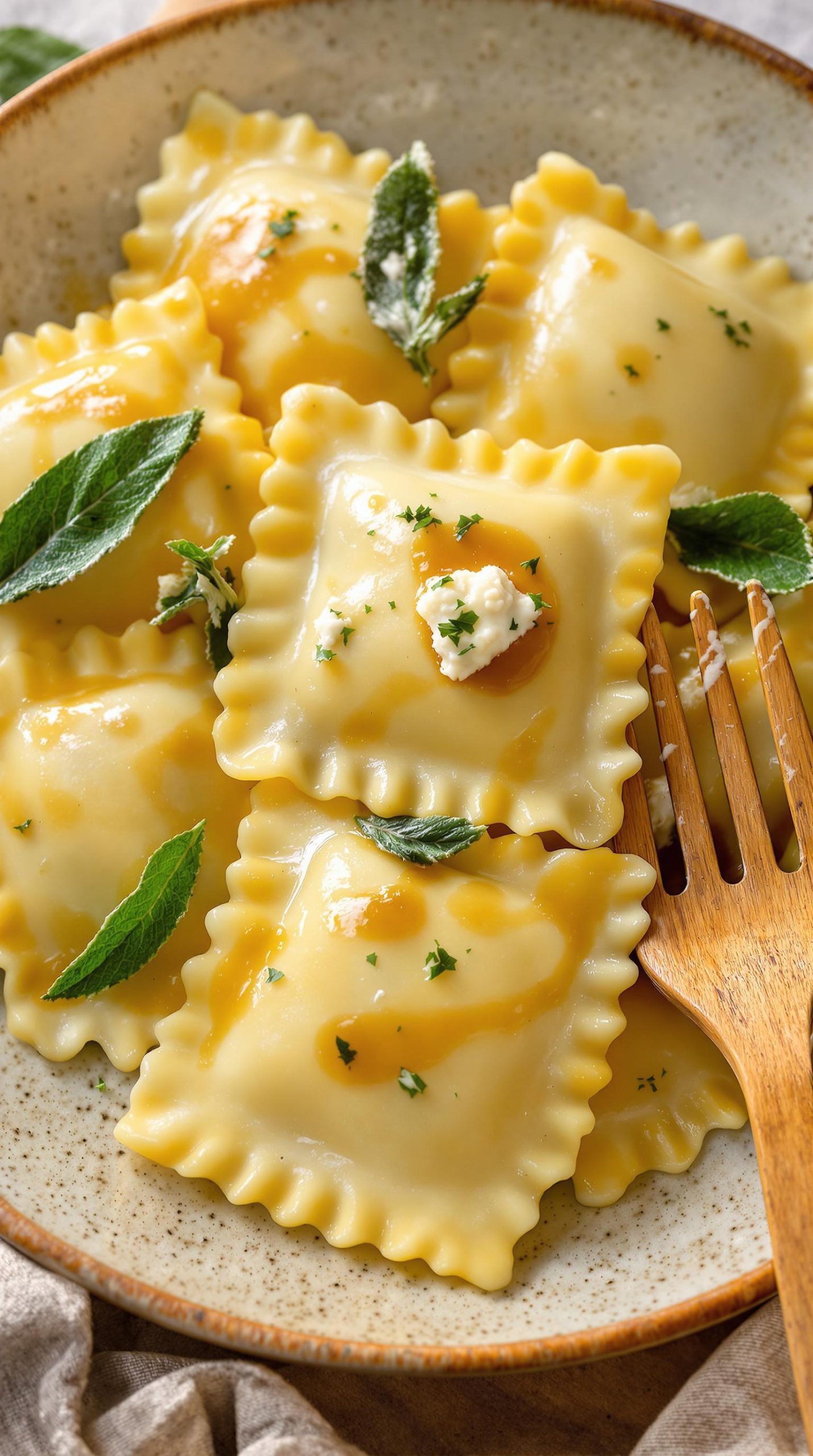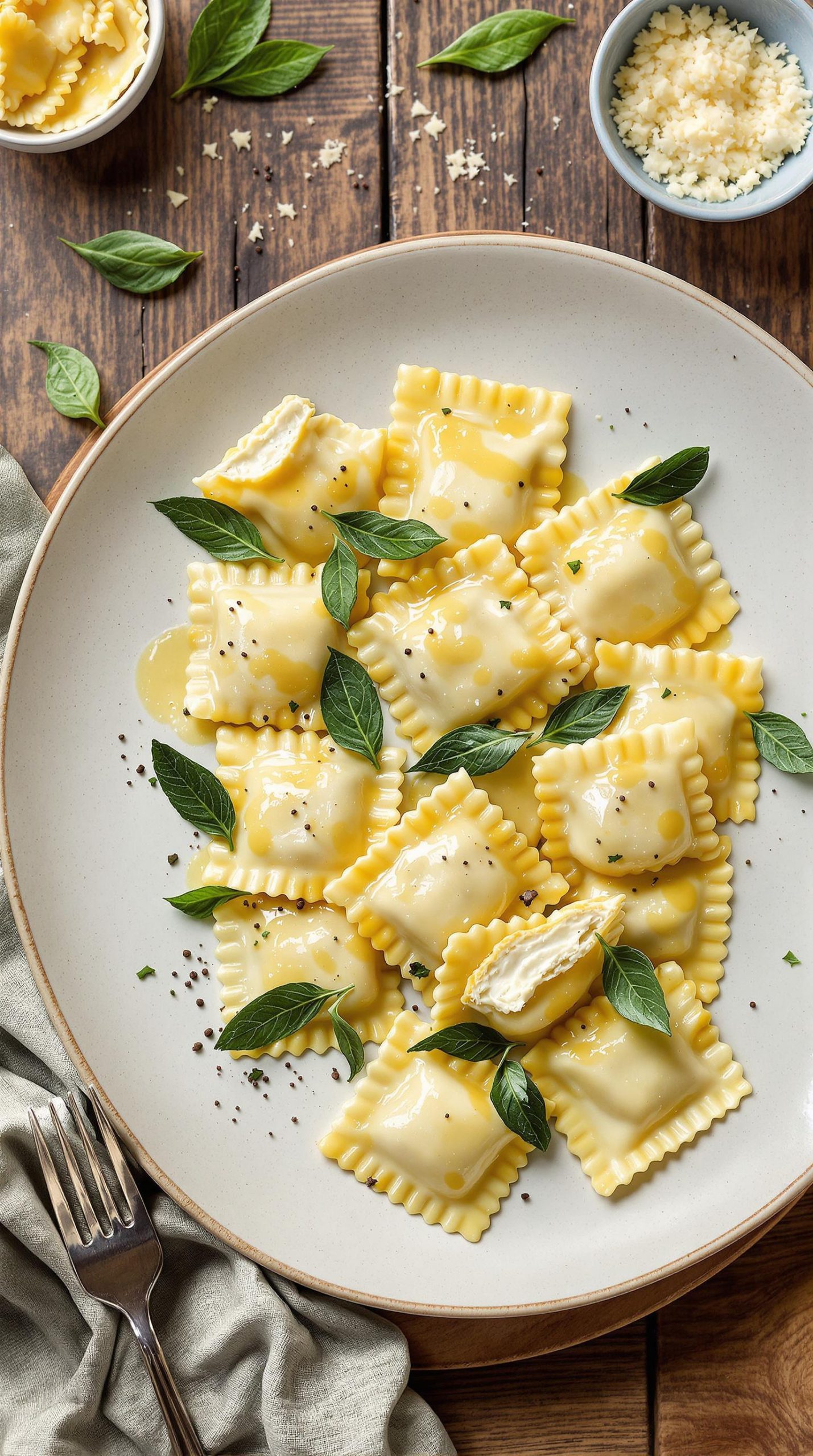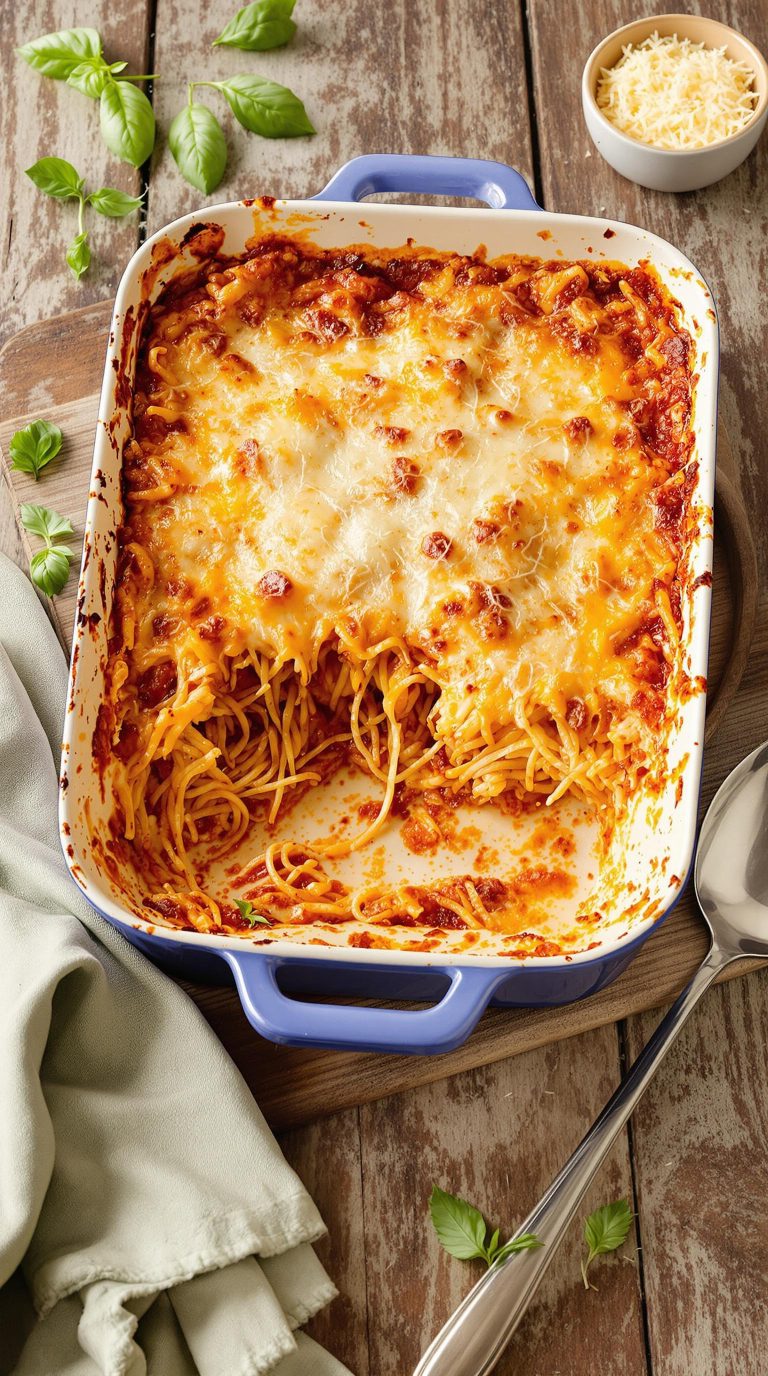Why You’ll Love these Fresh Ravioli with Ricotta Filling
Whether you’re a pasta enthusiast or just someone who loves feeling accomplished in the kitchen, these fresh ravioli with ricotta filling will become your new favorite homemade dish.
I adore how the homemade dough, stretched to that perfect 1/16-inch thickness, creates pillowy pockets around the creamy ricotta-mozzarella filling.
The combination of three cheeses gives these ravioli a rich, complex flavor that store-bought versions simply can’t match.
And isn’t there something deeply satisfying about cutting those perfect shapes with cookie cutters?
Trust me, the 3-4 minute boil is just enough time to achieve that ideal al dente texture. Ready for sauce!
What Ingredients are in Fresh Ravioli with Ricotta Filling?
Making fresh ravioli at home might seem intimidating, but once you gather these simple ingredients, you’ll realize it’s completely doable.
The beauty of homemade ravioli lies in the fresh, wholesome ingredients that create both the delicate pasta exterior and the creamy, cheesy filling. And honestly, there’s something magical about transforming basic pantry staples like flour and eggs into something so utterly delicious, don’t you think?
For the pasta dough:
- 3¾ cups flour
- 5 eggs
- 3 tablespoons olive oil
- 1 pinch salt
For the ricotta filling:
- 2 cups fat-free ricotta cheese
- 1 cup part-skim mozzarella cheese
- 3 eggs
- ½ cup low-fat Parmesan cheese
- ¼ cup parsley
While the ingredient list is straightforward, quality really matters here.
Try to find the freshest eggs possible for both the dough and filling—they make a noticeable difference in flavor and texture.
The cheese blend creates that perfect balance of creaminess and flavor, but feel free to adjust the ratios slightly based on your preference.
Some home cooks might also want to add a pinch of nutmeg or black pepper to the filling, which can elevate the flavor profile even more.
How to Make these Fresh Ravioli with Ricotta Filling

Making the dough is where our ravioli journey begins. Combine 3¾ cups of flour with 5 eggs, 3 tablespoons of olive oil, and a pinch of salt, then mix everything thoroughly for 10 to 15 minutes. This might seem like a long time, but trust me, developing that gluten is essential for that perfect pasta texture. The dough should feel smooth and elastic—like a baby’s cheek but with more stretch.
Once your dough reaches this heavenly consistency, let it rest for one hour. This resting period isn’t just for you to catch your breath; it’s actually allowing the gluten to relax, making the dough easier to roll out later.
While your dough takes its well-deserved nap, prepare your filling by combining 2 cups of fat-free ricotta cheese, 1 cup of part-skim mozzarella, 3 eggs, ½ cup of low-fat Parmesan, and ¼ cup of chopped parsley in a bowl.
When your dough has rested, roll it out to about 1/16th inch thickness—yes, that’s very thin, almost translucent, but necessary for proper cooking. Now comes the fun part: pipe small mounds of your cheese filling onto the dough, leaving enough space between each dollop.
Gently place another sheet of rolled dough on top, carefully pressing around each mound to seal, removing any air bubbles that might cause your ravioli to burst during cooking. Can you imagine anything sadder than watching your beautiful ravioli split open in the pot?
Use cookie cutters to create your desired ravioli shapes, ensuring the edges are well-sealed. Traditional squares or rounds work perfectly, but feel free to get creative—heart-shaped ravioli, anyone?
Once shaped, drop them into gently boiling salted water for just 3 to 4 minutes. Fresh pasta cooks much faster than dried, and you’ll know they’re ready when they float to the surface.
Drain and toss with your favorite sauce—a simple brown butter and sage works wonderfully, as does a classic marinara or creamy Alfredo. The beautiful thing about homemade ravioli is how the delicate pasta and rich filling shine through even with minimal sauce.
Fresh Ravioli with Ricotta Filling Substitutions and Variations
Although traditional ravioli recipes are delightful, you can easily customize these little pasta pillows to suit your taste preferences or dietary needs.
Need a dairy alternative? Swap the ricotta for tofu or cashew cream. Gluten-free? Try a blend of rice and tapioca flours for the pasta dough.
Vegetable lovers might appreciate adding spinach, roasted butternut squash, or caramelized onions to the filling.
For flavor variations, I’m partial to mixing in fresh herbs like basil or thyme, a dash of nutmeg, or even some lemon zest.
Craving protein? Add cooked ground chicken or mushrooms. So many possibilities, right?
What to Serve with Fresh Ravioli with Ricotta Filling
When pairing dishes with fresh ricotta ravioli, I always consider complementary flavors that won’t overpower these delicate pasta pillows. A light, barely-simmered tomato sauce with fresh basil lets the ravioli shine, while brown butter with sage creates a luxurious coating that enhances the cheesy filling.
For sides, think simple: a crisp arugula salad dressed with lemon and olive oil, or roasted asparagus with a hint of garlic. Crusty Italian bread makes the perfect sauce-sopping companion.
Wine? A bright Pinot Grigio or light Sangiovese balances the richness.
Final Thoughts
After spending time crafting these delicate pasta pockets, I can’t stress enough how rewarding homemade ravioli truly is.
The marriage of fresh pasta and creamy ricotta filling creates something store-bought versions simply can’t match.
Remember, practice makes perfect with pasta making. Your first batch mightn’t look Instagram-worthy, but the flavor will still shine through.
Don’t rush the process—this is slow food at its finest.
Keep experimenting with fillings once you’ve mastered the basics. Butternut squash, mushroom, or even seafood can transform this humble dish into something extraordinary.
What favorite filling might you try next?





